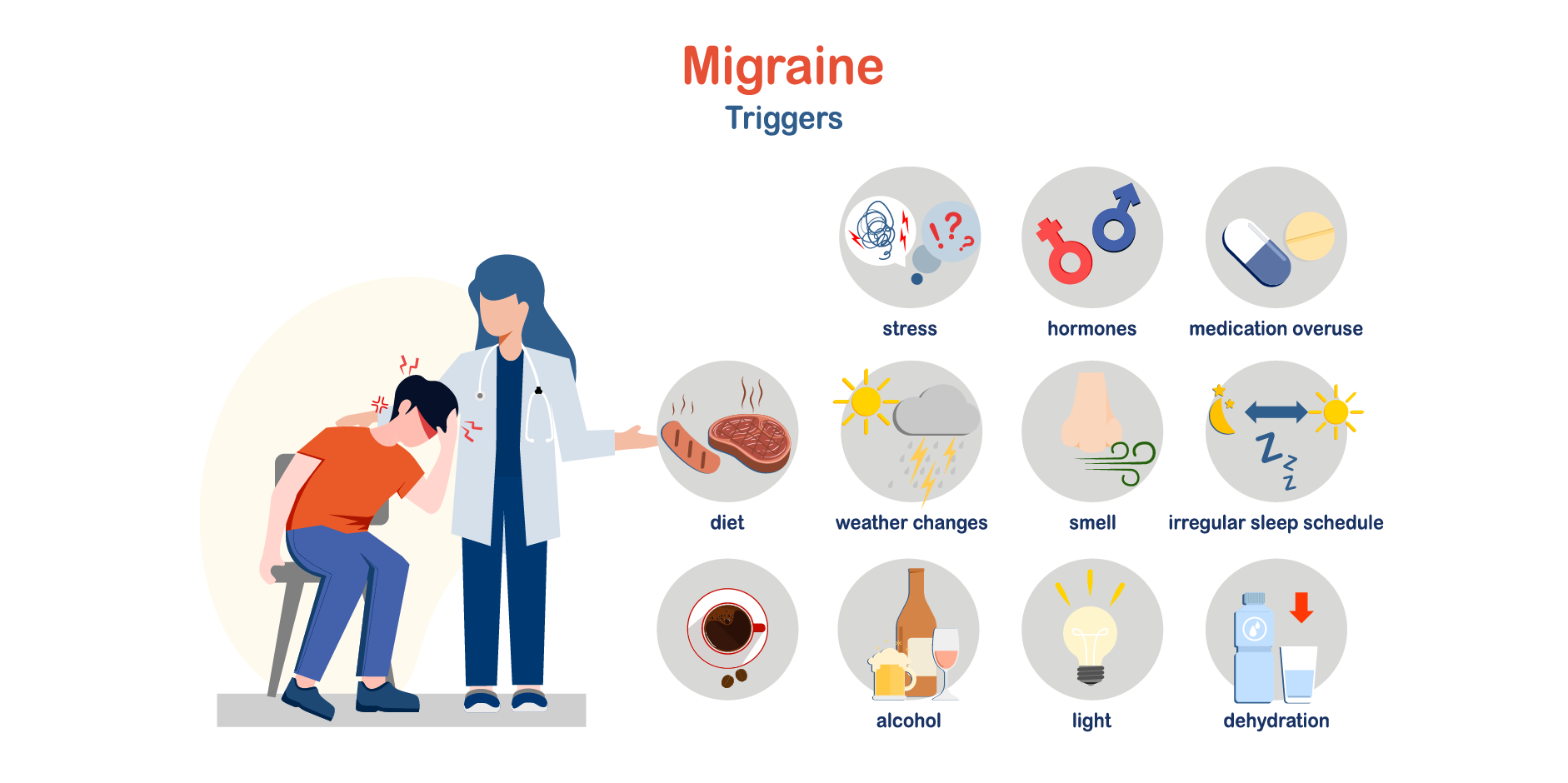Content on this page:
Content on this page:
Introduction
Migraine headache is a common episodic primary headache that is disabling with associated nausea and/or light and sound sensitivity.
Epidemiology
Based on the 2015 data from the World Health Organization (WHO), 50-75%
of adults aged 18-65 years old in the world have had headaches and ≥30% of them
have reported having migraine headaches. It is ranked as the second most
prevalent disorder in the world based on the Global Burden of Disease survey
2019 (GBD2019), the third highest cause of disability-adjusted life years
(DALYs) worldwide, and the first place of DALYs in young women. The prevalence
of migraine is higher in females across all age groups. Between 1990 and 2019, the age-standardized
incidence rate (ASIR) of migraine worldwide remained relatively stable at 1,460
and 1,476 per 100,000 population, respectively. However, a significant increase
in the incidence across all age groups, especially in individuals 15-19 years old,
was reported.
In Southeast Asia, Singapore experienced the most significant increase
in the prevalence rate of migraine. According to the United Nations, there are
350 million individuals that have migraine headaches in the Asia-Pacific region.
In a cross-sectional study conducted across 21 geographical regions, the
highest incidence of migraine cases was observed in South Asia.
Pathophysiology
It is hypothesized that cortical spreading depression causes the aura of migraine, activates trigeminal nerve afferents and alters the blood-brain barrier permeability by matrix metalloproteinase activation and upregulation. The activation of trigeminal nerve afferents causes inflammatory changes in the pain-sensitive meninges that generate the headache that occurs in migraine through central and peripheral reflex mechanisms. The pathophysiology of migraine includes activation of the trigeminovascular system and the pain of migraine is linked to the onset of neurogenic inflammation. The clinical symptoms of migraine are due to the process called sensitization in which neurons become increasingly responsive to nociceptive and non-nociceptive stimulation.
Risk Factors
The risk factors of migraine headache are age, female sex, familial
predisposition and genetic factors (MTDH, MEF2D and PRDM16
genes), and metabolic factors such as obesity, dyslipidemia, diabetes, and uncontrolled
hypertension.
The possible trigger factors are environmental triggers (eg weather
changes, bright lights, loud noise, motion, high altitude, odors [eg fumes or
perfumes]), lifestyle triggers (eg disturbance in sleep patterns, long-distance
travel, poor diet, skipping meals, smoking, stress, physical strain, fatigue),
hormonal triggers (eg menopause, puberty, menstruation), medication triggers
(eg Glyceryl trinitrate, oral contraceptives, hormone therapy), and dietary
triggers (eg caffeine, chocolate, aspartame, alcohol, monosodium glutamate,
tyramine-containing food and nitrate-containing food).
 Migraine Headache_Disease Background
Migraine Headache_Disease Background